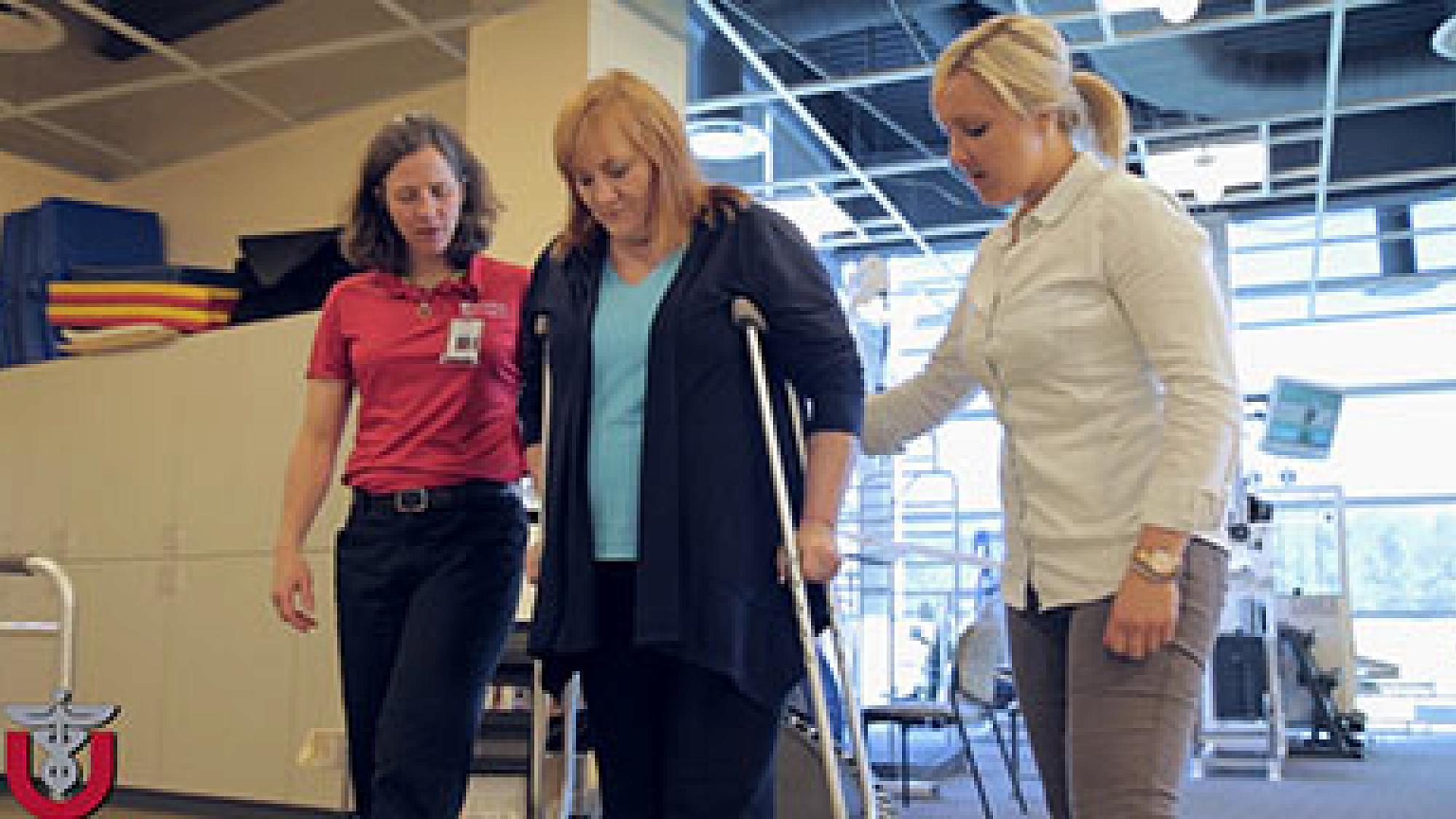Benefits of Hip Replacement Surgery
During a hip replacement, your surgeon will remove the parts of your hip joint that are causing pain and replace them with artificial parts. A hip replacement (also called total hip arthroplasty or THA) may be a treatment option when medications, physical therapy, or injections no longer manage hip pain effectively.
A hip replacement will provide you with the following benefits:
- Decrease your hip pain
- Improve your hip function
- Increase your quality of life
A new hip allows you to participate in more of the activities you enjoy. It also makes it easier to exercise regularly, which reduces your risk of type 2 diabetes, coronary artery disease, and obesity.
Why Choose University of Utah Health?
Our orthopedic hip and knee specialists are the most experienced in the Mountain West. Our specialized team of experts are the best in the region for treating patients with complex hip conditions.
We approach your care collaboratively, using state-of-the-art, evidence-based treatment methods. We are a regional referral center for orthopedic treatments, meaning specialists around the country send patients to us and trust our expert care.

Virtual Rehab Visits
Find a Hip Replacement Specialist
When Do You Need a Hip Replacement?
There are many reasons for a hip replacement. You may be a candidate if you have the following conditions:
- Arthritis, which can cause cartilage (spongy cushioning) in your hip to wear down
- Vascular necrosis, when lack of blood supply causes your bone tissue to die
- Hip dysplasia, when the hip socket is too shallow for its ball
- Hip pain or stiffness that limits your mobility
- Inflammation that doesn’t improve with medication
- Pain that doesn’t go away with nonsurgical treatments
- Perthes disease, a rare childhood condition of limited blood supply to the hip
- Rheumatoid arthritis, an autoimmune condition causing hip inflammation
- Severe hip pain, even while at rest
- Slipped capital femoral epiphysis, in which the ball of the thigh bone (head) slips out of place
Recovery Time for Hip Replacement
You will be able to walk immediately after a hip replacement. Most people resume their usual activities six weeks after surgery. Full recovery takes one year, but within six months most people feel much better than before surgery.
How Long Does a Hip Replacement Last?
Hip replacements typically last several decades, depending on your overall health and activity levels. Regular X-rays help us spot early signs that a joint replacement is wearing out. You may need another operation eventually, depending on your age and how much wear and tear you put on your hip joint.
Lifetime Precautions After Hip Replacement
Modifying your activities after a hip replacement will help your new joint last longer. You’ll need to avoid certain activities for the rest of your life after a hip replacement:
- Excessive stretching
- High-impact sports
- Jogging
- Jumping
- Running
If you are at high risk for infection, you should also take antibiotics when getting dental work or other surgical procedures for the rest of your life. This lowers your risk of developing a joint replacement infection.
Does Medicare Cover a Hip Replacement?
Medicare will typically help cover the costs of a hip replacement when your doctor deems it medically necessary. Talk with our care team if you have any concerns about the costs of a hip replacement. We will help you understand your payment options and may help connect you with financial resources.
Schedule an Appointment
Call 801-587-7109 to request an appointment with our orthopedic specialists. Referring providers may call 1-866-850-8863 or complete our patient referral form.
Patient Resources
Joint Academy: Preparing for Hip Replacement Surgery
Joint Academy is an extensive pre-surgery education program for joint replacement patients and their friends, family, and care coaches.
How to Determine Which Hip Replacement Surgery Method is Best for You
Did you know there are two kinds of hip replacement surgery? Learn about anterior and posterior approaches to hip surgery from Jeremy Gililand, MD.
Patient Guide: Recovery From Hip Replacement
Hip replacement can seem like a daunting process, but we will walk you through the entire way from before-surgery checklists to recovery and life after surgery.






